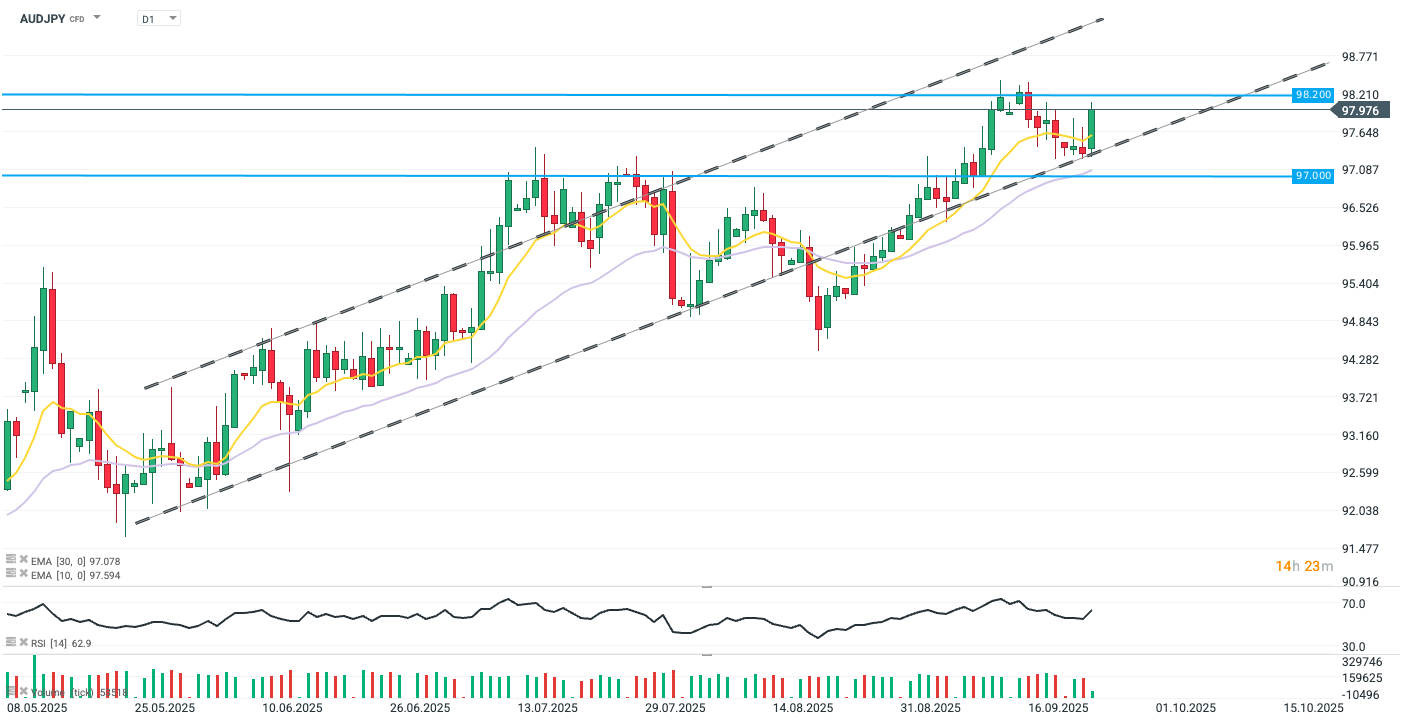Chart of The Day – AUD/JPY
AUDJPY rebounds bullishly by 0.7%, with yen giving up the most against the Australian dollar among all G10 currencies. Dynamic appreciation of AUDJPY has been motivated by trend-supporting data from both economies, particularly higher monthly inflation reading in Australia that caps expectations for further monetary easing in the country.

AUDUSD rebounds from the lower bound of the well pronounced increasing channel. Today’s gains erase the recent correction which pushed the pair off of its highest levels since the start of 2025. Source: xStation5
What is shaping AUDJPY today?
- Australia’s consumer price index rose 3.0% in August from a year earlier, up from 2.8% in July and slightly above forecasts. The increase was partly due to base effects but highlighted persistent pressures, particularly in services such as restaurant meals, takeaway food, andf audiovisual services. Core inflation was mixed: the trimmed mean eased to 2.6%, while the measure excluding volatile items climbed to 3.4%. Housing costs also ticked higher, suggesting upside risks for third-quarter inflation after months of moderation.
- Markets quickly adjusted rate expectations after the inflation surprise, with major banks and financial institutions abandoning calls for a November cut. Odds of a move dropped to 50% from nearly 70% before the data, with investors now expecting rates to stay at 3.6% until at least May 2026. Analysts flagged the labour market as the key variable for policy direction, though its volatility makes a near-term cut less likely. The RBA continues to emphasize quarterly CPI as its preferred guide.
- On the JPY side, Japan’s private sector activity is visibly slowing, as indicated by September’s flash PMIs. The composite index hit the lowest in four months, with manufacturing falling more than expected from 49.7 to 48.4, the lowest since March, due to sharp order declines and weaker exports. Services’ expansion helped to offset the downturn in manufacturing with solid activity and sales, reflecting robust domestic demand. Cost pressures persisted, selling prices rose, and employment growth slowed to a two-year low.
The material on this page does not constitute financial advice and does not take into account your level of understanding, investment objectives, financial situation or any other specific needs. All information provided, including opinions, market research, mathematical results and technical analyzes published on the Website or transmitted To you by other means, it is provided for information purposes only and should in no way be construed as an offer or solicitation for a transaction in any financial instrument, nor should the information provided be construed as advice of a legal or financial nature on which any investment decisions you make should be based exclusively To your level of understanding, investment objectives, financial situation, or other specific needs, any decision to act on the information published on the Website or sent to you by other means is entirely at your own risk if you In doubt or unsure about your understanding of a particular product, instrument, service or transaction, you should seek professional or legal advice before trading. Investing in CFDs carries a high level of risk, as they are leveraged products and have small movements Often the market can result in much larger movements in the value of your investment, and this can work against you or in your favor. Please ensure you fully understand the risks involved, taking into account investments objectives and level of experience, before trading and, if necessary, seek independent advice.




